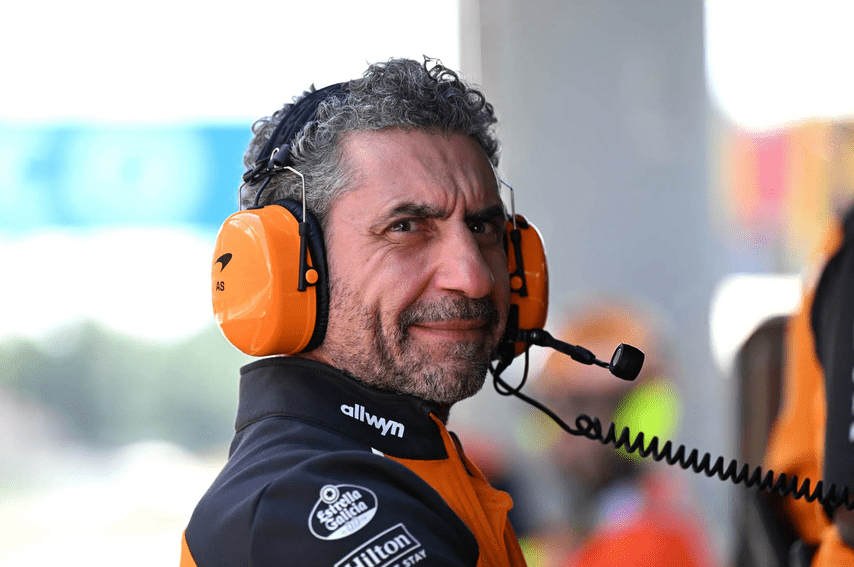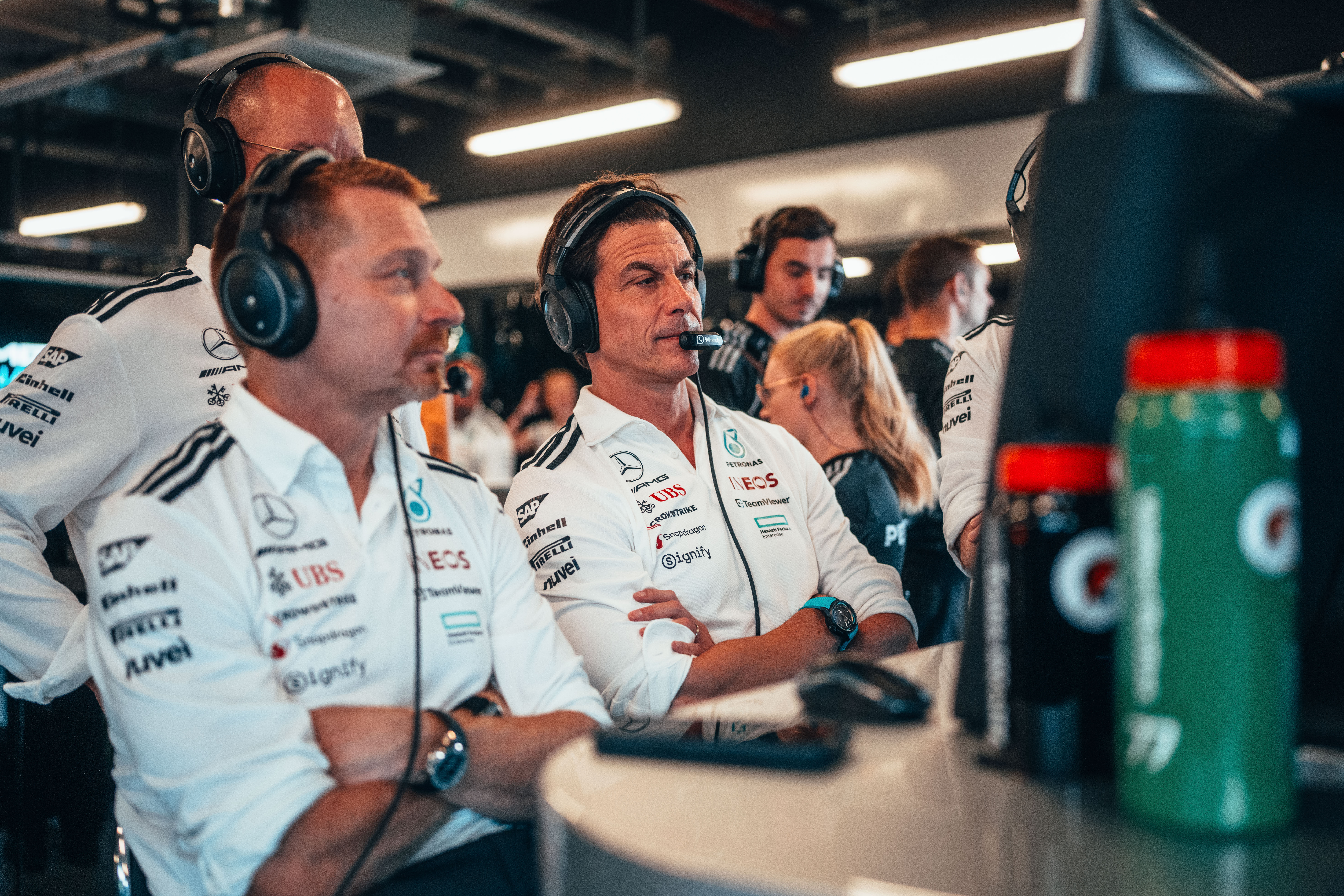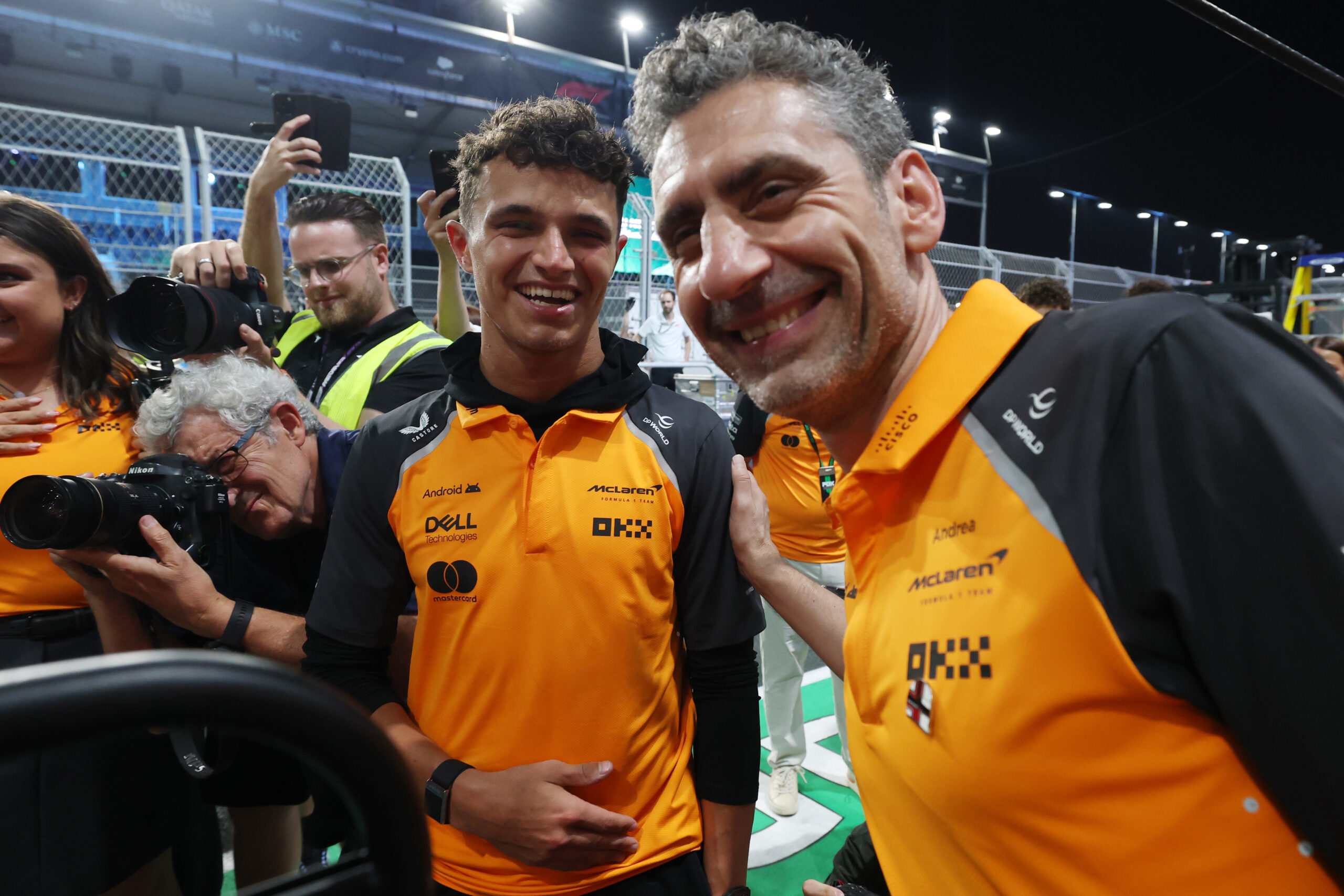McLaren team principal Andrea Stella defended the team’s controversial late-race instruction for Oscar Piastri to hand second place back to teammate and championship rival Lando Norris during the F1 Italian GP.
The McLaren pitwall has once again landed itself in hot water after intervening to undo the consequences of a slow pit stop that saw Norris inadvertently lose track position to Piastri in the closing stages of the race.
How it unfolded
Norris and Piastri were running in P2 and P3 respectively at the time, trailing Max Verstappen. McLaren opted to let its drivers run long, making the switch from medium tyres to softs for the final handful of laps.
Traditionally, the driver leading on track receives pitstop priority. In Monza, McLaren consulted Norris on the matter, who agreed to let Piastri stop first, on the condition that he wouldn’t lose position to his teammate through the undercut. Piastri’s stop on Lap 45 of 53 went off without a hitch, executed in just 1.9 seconds. However, the pit crew ran into a problem with the left-front wheel on Norris’s subsequent visit to the pits, causing him to lose ground and ultimately emerge third on the road after a less than ideal 5.9 second stop.
Rather than let the order stand, McLaren swiftly intervened to reverse Norris’ pitstop misfortune, instructing Piastri to relinquish his position. The Australian complied, though his comments suggested that McLaren had previously discussed scenarios where drivers might lose out due to factors beyond their control: “We said that a slow pit stop was part of racing, so I don’t really get what changed here. But I’ll do it.”
Piastri later reiterated his point in the post-race press conference, suggesting the matter would be revisited internally.
The unconventional nature of the request, given the circumstances, was reflected in Verstappen’s reaction, who laughed incredulously when informed by his race engineer of the McLaren switcheroo: “Ha! Just because he [Norris] had a slow stop?”
McLaren stands by the call
Speaking to media after the F1 Italian GP, Stella defended McLaren’s handling of the situation, stressing that the call to reverse positions aligned with the team’s internally established principles.
“I think that the pitstop situation is not only a matter of fairness, it’s a matter of consistency with our principles,” Stella said.
“However the championship goes, what’s important is that the championship runs within the principles and the racing values that we have at McLaren and that we have created together with our drivers.
“The situation whereby we stop the drivers is not only related to the pit stop—and this is a thing useful that I clarify—it’s also related to the fact that we wanted to sequence the pit stops of the two cars by stopping Oscar first and then Lando.”
Pitstop gamble, explained
Stella explained that the team opted for this unorthodox pitstop sequence to cover off Ferrari’s Charles Leclerc, who had stopped several laps earlier and was gaining ground on fresh tyres. On paper, the team’s calculations were on point: Piastri pitting first wasn’t enough on its own to vault him ahead of Norris. However, they clearly had not accounted for the possibility of any unforeseen delays during Norris’ stop.
“We had the clear intent that this should have not led to a swap of position,” Stella said. “It was just done because we were covering Leclerc, and at the same time we were waiting until the last possible moment to see if there had been a red flag or a safety car.
“We pursued the team interest, and to capitalise as much as possible on this interest, we needed to go first with Oscar, then with Lando, but the clear intent was this is not going to deliver a swap of positions.
He continued: “So the fact that we went first with Oscar, compounded by the slow pitstop of Lando, then led to a swap of positions, and we thought it was absolutely the right thing to go back to the situation pre-existing the pitstop and then let the guys race.
“This is what we did, and this is what we think is in compliance with our principles.”
Stella: “We wanted a bigger result”
Stella admitted the easier option would have been to pit both drivers earlier. He explained the team’s reasoning, saying: “Obviously stopping to cover Leclerc would have been the simple solution to the way the race would have unfolded, but it would have limited the result.”
The team hoped to stretch its stints to maximise potential benefits from a red flag or safety car, hoping to challenge Verstappen on softer tyres if the race tightened up late. Ultimately, the Dutch driver finished 19 seconds ahead, leaving McLaren’s gamble looking optimistic at best.
“So, we wanted to find a way today to pursue a bigger result. Like in case of a red flag, that would have been quite strong with the two McLarens leading.
“Even in terms of a safety car, up until a certain point it would have been strong. And also we wanted to stop late enough to go on softs, because then had there been a late safety car, we would have been on soft with Verstappen on hard. So there were incentives from a racing point of view and from an overall result point of view at the end of the race to stay out. We stayed out up until the point where we needed to sequence the pitstop in a different way compared to the order in which our two drivers were.”
Where do “papaya rules” go from here?
Asked whether McLaren’s guiding principles would be reassessed in light of the incident, Stella appeared to suggest the team would not be moving away from the implementation of the so-called papaya rules, stressing that “reviewing doesn’t automatically mean something must change.”
He told the media: “Reviewing is the foundation of pursuing excellence. If you think that whatever you do is good and you are not going to have an individual or a team review of anything you do, even the thing you do perfectly, simply you are not going to progress.
“So for me reviewing, it doesn’t mean like, ‘oh, certainly we will have to change it.’ Potentially we will review them and we will further align on them and we will confirm them. So the fact that I use this word doesn’t mean that there will be changes.
“The fact that I use this word means that that’s how we approach things at McLaren and this review which is so essential in engineering, in operation, does apply as well in the way you go racing and does apply in the way you go racing with your drivers.”
However, Stella acknowledged the situation raised questions about how slow pitstops, specifically, fit into McLaren’s internal code of conduct.
“So, we will review the case, we will review also the situation whereby it was a slow pitstop in isolation, we already have our principles in relation to that, we will review our principles in relation to that, and reinforce the direction, if this is in agreement with our drivers.”
Piastri still retains a healthy lead over Norris heading into the Azerbaijan GP, but the net effect was a six-point swing. Had the swap not occurred, the Australian would be heading into the final eight rounds with a 37-point cushion instead.





